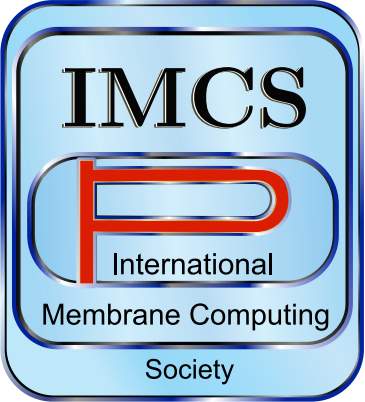Invited speakers
Paolo Milazzo (Pisa, Italy)
Title of the talk: Applications of P systems in population biology and ecology
In this talk we will describe a variant of P systems, called minimal probabilistic P systems (MPP systems), that we recently proposed for the modelling of population and ecosystem dynamics. MPP systems are essentially flat multiset rewriting systems with probabilistic maximal parallelism and rules promoters. Although rather simple, MPP systems can be used to construct concise stage-based population models, namely models of populations characterized by stages in which all of the individuals are involved in the same activity (e.g. reproduction, hibernation, natural selection). As model analysis techniques for MPP systems we considered probabilistic simulation and statistical model checking.
We applied MPP systems to study the stability of some kinds of European water frog populations. In particular, we faced the problem of understanding why in some of these populations (known as "L-E complexes") that are the results of hybridization of two different kinds of frog, potentially lethal DNA mutations are accumulated in the genotype of the hybrid individuals. Model analysis allowed us to formulate the hypothesis that such mutations are actually necessary, together with a form of sexual selection, to avoid extinction of the whole population.
In order to allow other aspects of populations and ecosystems to be modelled such as spatiality aspects, age structures and social hierarchies, in the last few years we proposed other variants of P systems such as attributed probabilistic P systems (APP systems) and spatial P systems.
Thomas Hinze (Cottbus, Germany)
Title of the talk: Coping with dynamical structures for useful applications of membrane computing
Coping with dynamical structures turns out to be both a challenging task but also a crucial clue in understanding, fine-grained modelling, and utilisation of biological and biologically inspired information processing. Principles of molecular computing are mainly based on modifiable spatial and topological arrangements in different forms, contexts, and scales ranging from nanoscopic surface shapes up to complex macroscopic behavioural patterns. From a composition-oriented point of view, we identify four levels in which dynamical structures essentially occur: (1) the molecular level, (2) the level of reaction network modules, (3) the level of membranes, and (4) the higher-order organism and population level. Alongside this hierarchy, we present corresponding P system frameworks together with application case studies and usefulness of the results for systems biology, bionics, engineering, and computer science.
Matteo Cavaliere (Edinburgh, Scotland)
Title of the talk: Eco-evo dynamics and the role of cellular computing
In the commons, communities whose growth depends on public good, individuals often rely on simple strategies to decide whether to contribute to the shared resource (at risk of exploitation by free-riders, i.e., cheaters). This issue is also present in cellular populations. In this talk I will discuss how cellular decision-making can be a crucial factor to facilitate the sustainable growth of cellular populations. Results will be discussed with simple computational models and experimental data obtained with synthetic cells.
References:
- Plasticity Facilitates Sustainable Growth in the Commons. M. Cavaliere, J.F. Poyatos. Journal of the Royal Society Interface, 10, 2013.
- Exploitation by Cheaters Facilitates the Preservation of Essential Public Goods in Microbial Communities. C. Moreno-Fenoll, M. Cavaliere, E. Martinez-Garcia, J.F. Poyatos. bioRxiv, 2016.
Agustín Riscos-Núñez (Sevilla, Spain)
Title of the talk: Borderlines of efficiency: what's up?
Some of the theoretical open problems and current challenges concerning P systems from a theoretical perspective will be discussed, focusing on results related to searching bounds for computational complexity classes in general, and to the P vs NP problem and the Paun's conjecture in particular.
Membrane computing is already a mature field, and the research community around it is becoming more interdisciplinary and diverse. Although nowadays it seems that practical applications receive a rapidly increasing attention, there are still key theoretical issues that need to be addressed.


